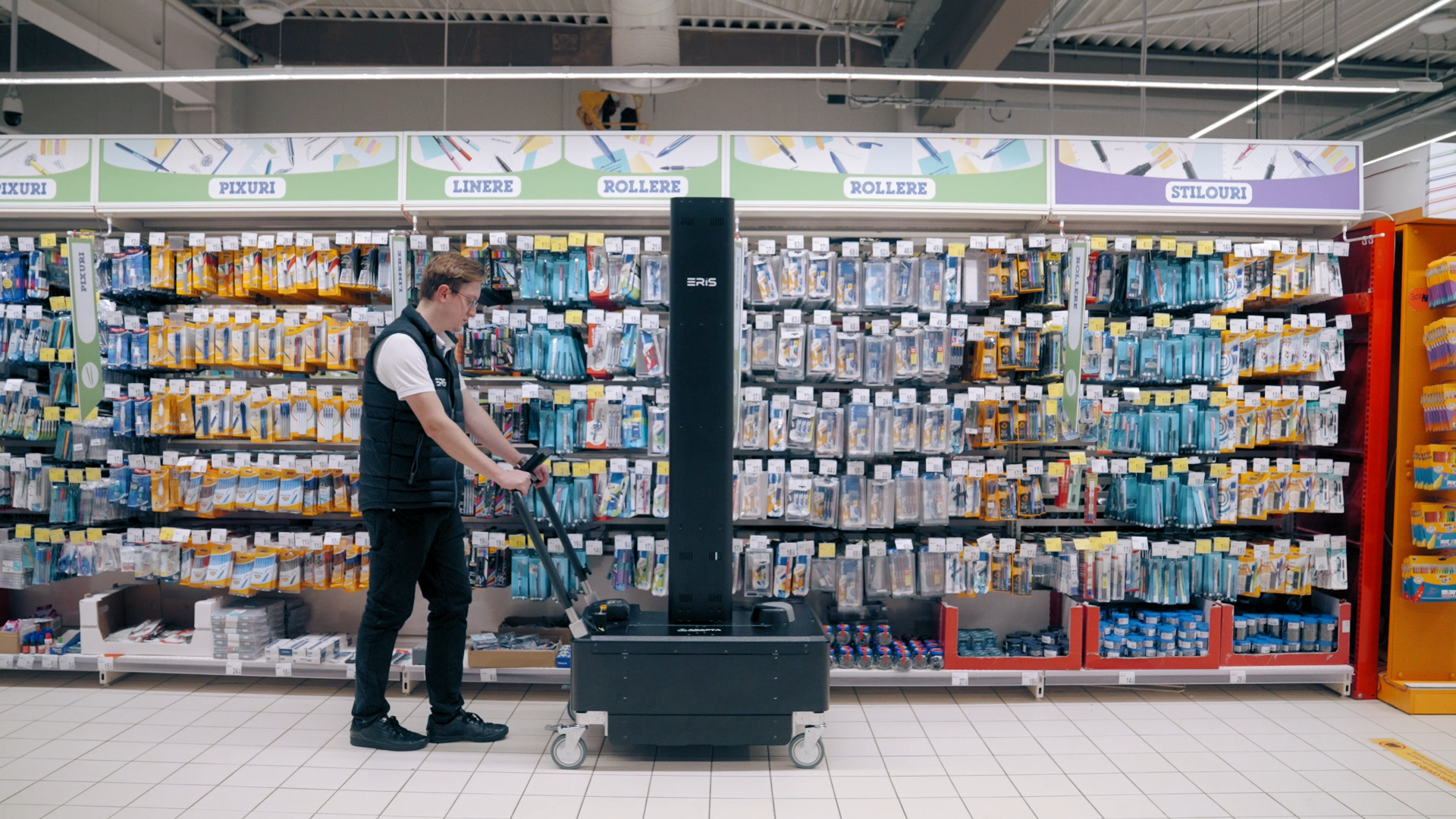
The necessity of retail automation has long been present. From the classic hand-held barcode scanner - adding mobility to physical retail stores’ inventory process - to the autonomous robots that roam around aisles scanning price tags and detecting on shelf availability, there have been solutions created to bring efficiency to in-store price error identification and inventory management processes. However, it seems that neither solution actually fits the conjuncture of retail industry today, nor puts retailers’ or their staff’s worries at ease.
Heavily reliant on human staff, hand-held barcode scanners are a low-price solution that equips store staff with the ability to quickly scan barcodes individually. Although they bring higher accuracy and easiness in solving tasks, with the industry’s perpetual growth, barcode scanners are slowly falling behind the real-life retail necessities.
On the other hand, the autonomous alternative, robots that are scanning entire shelves faster and with higher accuracy than any other previous solution, is being brought into the retail industry spotlight. They send in-store collected data regarding prices and OSA to a database from where the store’s staff can act towards solving the discovered issues. Even though it offers instant reports on store status, solving the problems is, nevertheless, reliant on a good communication between departments, leading to misinformation risks, dependency on store staff’s reaction to resolve detected issues and associated delays in action.
From the two described retail solutions, the latter is unmistakably more efficient, and by far the most expensive. It brings on the table technologies that still seem hard to grasp by most retailers and that are worrying store staff members under the belief that they’ll be replaced.
ERIS is the retail robot that completes in-store inventory related tasks with the help of a human operator. Driven around the store’s aisles to detect incorrect price tags, to recognize out of stock or soon to be out of stock products, ERIS generates its scanning results instantly as:
Although, still dependent on human input, the needed workforce to complete redundant tasks is lowered to one person responsible of navigating ERIS through the aisles and analyzing output results of scanning sessions. The same operator is enabled to print and replace price labels right then and there, as well as to act upon solving or communicating out-of-stock situations in order to be solved. Working with ERIS decreases scanning time to under 5 minutes per aisle, overtaking the efficiency of hand-held barcode scanners and matching the one of autonomous systems. This allows store staff to be free of repetitive tasks and, instead, gaining the opportunity to focus on more important matters, essential to improving the overall store efficiency.
ERIS is not heavily dependent on interdepartmental communication as most discovered issues can be solved on the spot, hence lowering the risk of misinformation or delays in action. Being operated and not fully autonomous makes ERIS not only cost-effective, but also a user-friendly solution. In addition, the instantaneous nature of in-store problem solving coming from collaborating with ERIS promotes the increase in customer satisfaction and loyalty, as well as the prevention of sales loses.
Between a hand-held scanning solution, the use of which is becoming ineffective as retail needs are progressing, and an autonomous robot that can be intimidating for retailers, both cost and technology wise, there is a middle ground option, less daunting and more budget friendly, adapted to today’s retail necessities. Collaborating with its human operator, ERIS brings efficiency into solving both price tag inconsistency and OOS issues, avoiding customer dissatisfaction or loses in customer loyalty and sales, while lowering risks brought about by lengthy streamline communication and encouraging the advantage of on-the-spot problem solving. Through its underlined capabilities, ERIS is the liaison between the retail industry, and an efficiency and technology focused future.